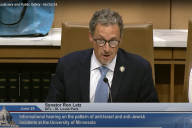You have /5 articles left.
Sign up for a free account or log in.
We have both the good fortune and bothersome misfortune to live in a time of rapid change in online higher education. Technologies, pedagogies, practices and competition are in flux. Choosing among the options is a critical task of the online learning administrator. The stakes are very high -- if a university commits to the broad implementation of a technology or strategy or practice that fails, thousands of students are impacted, programs are closed, reputations are damaged and millions of dollars go down the drain.
We have seen this time and again in nonprofit and particularly in for-profit ventures. Miscalculating the future, creating a flawed vision of how to proceed, bending decisions based on hype for short-term gains rather than long-term stability has resulted in the ruination of students’ lives, putting them in lifetime of debt for a degree that never was completed. While the headlines capture the grand-scale losses, there are many more individual programs and initiatives that are terminated due to miscalculations.
The weight of responsibility is felt by online learning administrators for making the right recommendations; envisioning the proper course of practices; preparing alternatives “just in case” one or another element of the initiative fails; and providing an acceptable level of security for students, staff and the institution. So how does one go about making the right decisions, taking the correct course of action in this time when technology turns on a dime and competition springs up seemingly out of nowhere?
There is no single path to assured security, but there is an array of steps that can be taken to help to assure success. They are a scaffold to creating a vision. Too often in meeting with online program leaders on campus visits, at conferences, and in “second-opinion” calls, I find colleagues have no clear vision beyond keeping within budget and maintaining the status quo with modest growth. That is not the recipe for success in this environment of expanding competition and changing best practices.
Successful visioning for those in our field includes much information gathering:
- First and foremost, leaders must be well informed, fully and deeply up-to-date on the latest technologies, trends, regulations and practices. This involves daily vigilance. Checking for updates once a month or once a week is not enough. Inside Higher Ed provides five excellent updates a week covering the breadth of higher ed. That is a great foundation, and yet more information can be gathered. Social media offers the fire hose of information that must be sorted and assimilated daily. Find credible, quality sources that are relevant to your institution to check each and every day. Do your due diligence to know the existing technologies, the emerging technologies, the best practices, the current regulations and the trends in all of these areas.
- Know your competitors, what they are doing, what new initiatives are being launched, where they are marketing and which of their programs are succeeding and which are floundering. Some of this information is gleaned from social and the traditional media. More of this information comes from attending conferences and networking and going to sessions.
- Know your institution inside and out. Which campus programs are thriving -- which are not? Know each of the deans, and if possible, all of the department chairs and directors. Touch base often to plumb their programmatic desires and needs.
- Know your administration’s priorities and goals, and know your institutional marketing plans and initiatives. Know what is driving their priorities: the board of the institution, state mandates, federal regulations, alumni desires, regional corporate learning needs, etc.
- Assemble a corporate advisory board including small businesses along with the larger employers. Listen carefully and often to their needs. What learning do they need for employees and prospective employees? What new technologies are emerging for which there is a shortage of trained or certified workers? How can your institution help through online or self-paced programs for which there is an emerging market?
- Engage your staff in the information gathering and sharing. Tap their wisdom to collaborate with you in decision making. This is important to create a cohesive unit with a shared vision. Sharing these perspectives makes the team stronger and creates a smoother path to succession.
Assemble all of these sources of information and engagement practices to shape a vision of the future of online learning at your institution. The vision should include incremental steps out to three or four years. It should be revisited at least twice a year -- more often when significant changes appear on your radar.
Are you doing the due diligence enumerated above? Which of your competitors do you believe are doing that kind of horizon scanning and planning? How might you do a better job in each of the areas?





